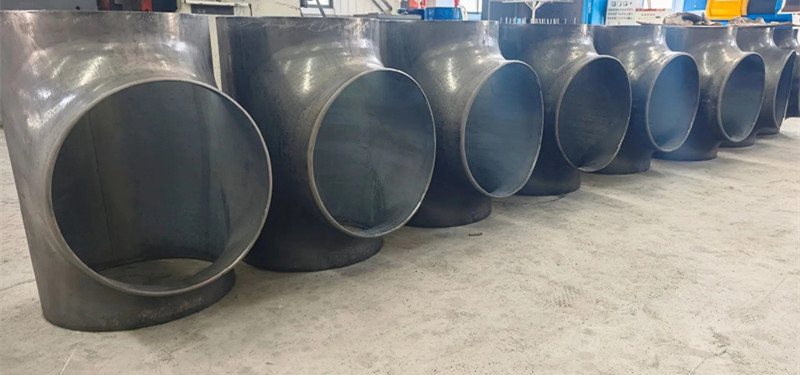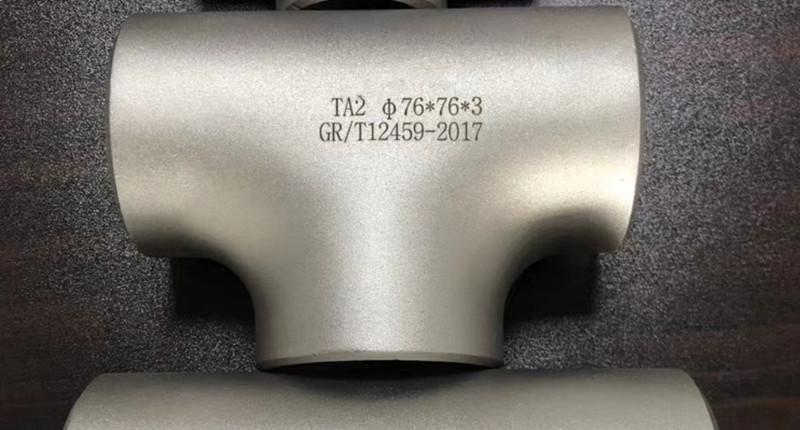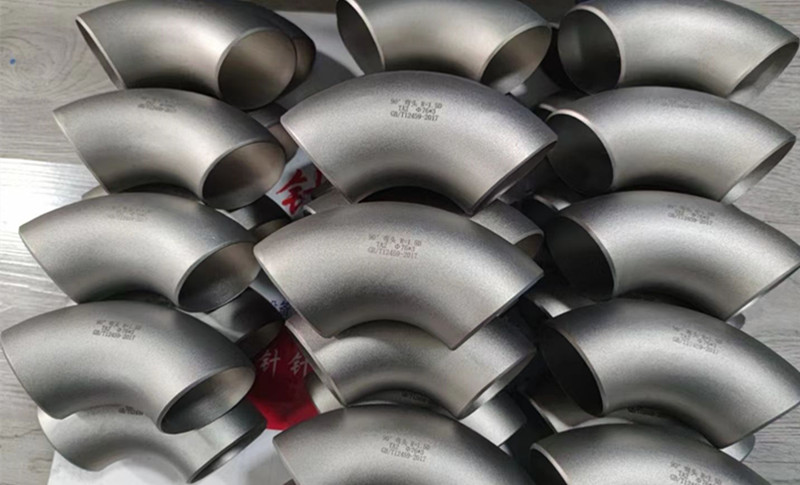What are titanium pipe fittings used for?
A titanium pipe fitting such as a tee is a critical connector in titanium pipe and fittings systems, designed to split or merge fluid flow through its branch structure, while titanium fittings serve as the main conduit for transporting media. When used together, the titanium pipe fitting is typically welded or flange-connected at branch points of the titanium pipe and fittings to ensure sealing and stability under high pressure and highly corrosive environments. For example, in chemical pipelines, titanium fittings transport corrosive media, while titanium pipe fittings like tees distribute the fluid to different reactors; in marine seawater systems, titanium pipe fittings connect pipe branches to enable multi-loop cooling circulation. This combination is widely used in petrochemical, marine engineering, nuclear power, and medical equipment industries, taking full advantage of titanium’s corrosion resistance and lightweight properties to build efficient and reliable piping networks.
Main Types of Titanium Tees
Straight Tee
All three ends have the same diameter (e.g., Φ50×Φ50×Φ50), suitable for uniform fluid distribution or merging.
Applications: Chemical pipelines, pharmaceutical equipment, seawater desalination systems.Reducing Tee
One port has a different diameter than the other two (e.g., Φ50×Φ50×Φ32), used for flow reduction and distribution.
Applications: Used when flow or pressure needs to be adjusted in pipeline systems, such as in oil pipelines and heat exchanger interfaces.90° Tee (Right-Angle Tee)
The branch is perpendicular (90°) to the main line, with a compact structure, suitable for piping layouts with limited space.
Applications: Ship piping, nuclear power cooling systems.45° or Y-Type Tee (Lateral Tee)
The branch forms a 45° or Y-shaped angle with the main pipe, offering lower fluid resistance and reduced turbulence and pressure loss.
Applications: High-flow systems such as chemical reactors or gas transmission lines.Reinforced Tee
Reinforcements are added at the branch (e.g., thickened wall or welded reinforcement ring) to increase pressure resistance.
Applications: High-pressure pipelines, such as deep-sea oil & gas extraction and nuclear main steam lines.
2. Manufacturing Methods of Titanium Tees
The production method directly affects the tee's strength, sealing, and corrosion resistance. Common techniques include:
Hydroforming
A titanium pipe is placed in a mold and expanded into shape using high-pressure fluid, suitable for small to medium diameters (DN15–DN300).
Advantages: Seamless one-piece structure with excellent pressure resistance.Welded Tee
Made by cutting and welding titanium plates or pipes, ideal for large-diameter or special-shaped tees (above DN300).
Key Process: Requires TIG or plasma welding, followed by internal surface polishing and pickling passivation to prevent weld corrosion.Forged Tee
Formed by forging titanium billets and machining the ends, suitable for high-pressure and high-purity applications such as semiconductors and medical use.
Advantages: Dense microstructure, excellent mechanical properties, though higher cost.Machined Tee
CNC machined directly from titanium bar or block, used for custom sizes or high-precision needs (e.g., aerospace industry).
3. How to Select Titanium Tees
it’s essential to confirm the following parameters:
| Parameter | Details | Notes/Examples |
|---|---|---|
| Material Grade | Commercially pure titanium (TA1, TA2) or titanium alloy (TC4, Grade 5) | TA2 for chemical environments; TC4 for high-pressure aerospace systems |
| Size Specifications | Diameter range: DN15–DN1000 (or inch-based); Wall thickness: SCH10, SCH40, etc. | Reducing tees must specify all port sizes, e.g., DN50×DN50×DN32 |
| Pressure Rating | Nominal pressure (PN10, PN16, etc.) or ANSI Class (Class 150, Class 300, etc.) | Determines pressure capacity |
| Connection Type | Butt weld (BW), socket weld (SW), flange (RF, FF), threaded (NPT, BSPP) | Choose based on pipeline design and installation requirements |
| Surface Treatment | Pickling & passivation (anti-corrosion), electro-polishing (high cleanliness), sandblasting (improves surface adhesion) | Select based on application needs |
| Certification | ISO 9001, ASME B16.9 for chemical use; FDA, ISO 13485 for medical applications | Ensure compliance with industry standards |
| Special Requirements | Non-destructive testing (RT/UT), cryogenic resistance (-196°C), biocompatibility (for implants) | Specify during ordering if needed |
Titanium elbow
There is another titanium pipe fitting used to change the direction of piping called titanium elbows, which are essential components for pipeline redirection and are well-suited for complex spatial layouts. Common angles include 45°, 90°, and 180° (U-bend). Its curved structure allows fluid to turn smoothly, reducing pressure loss, and is ideal for corrosion-resistant piping systems in industries such as chemical processing, marine, and nuclear power.
Connection Methods:
Welding (most common): Directly butt-welded to titanium pipes to ensure sealing.
Flange connection: Used for pipelines that require disassembly, such as equipment inlets and outlets.
Threaded connection: Suitable for small-diameter, low-pressure pipelines and easy installation.



